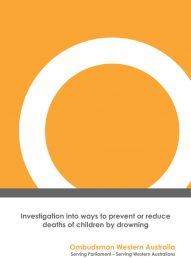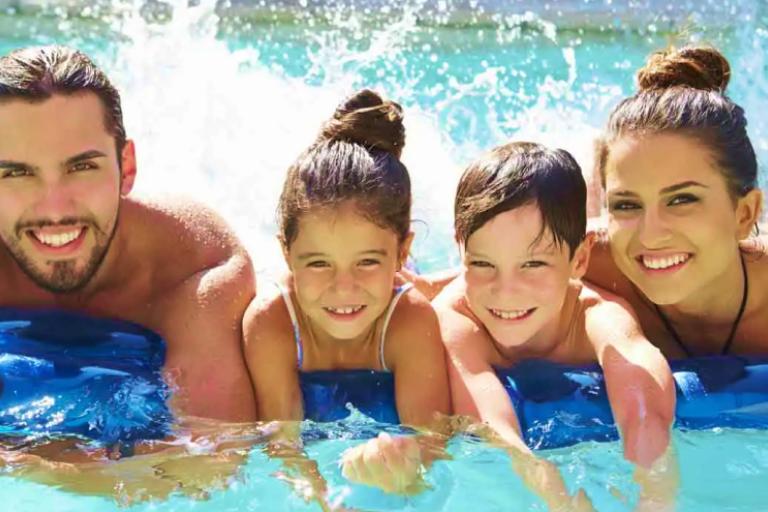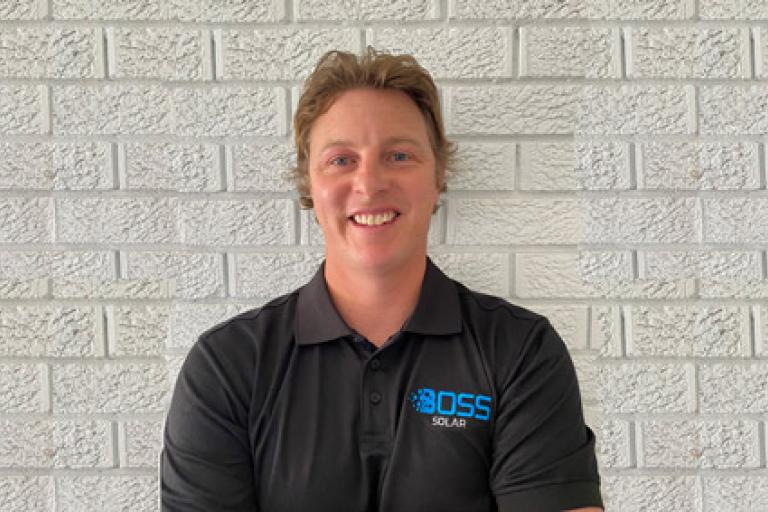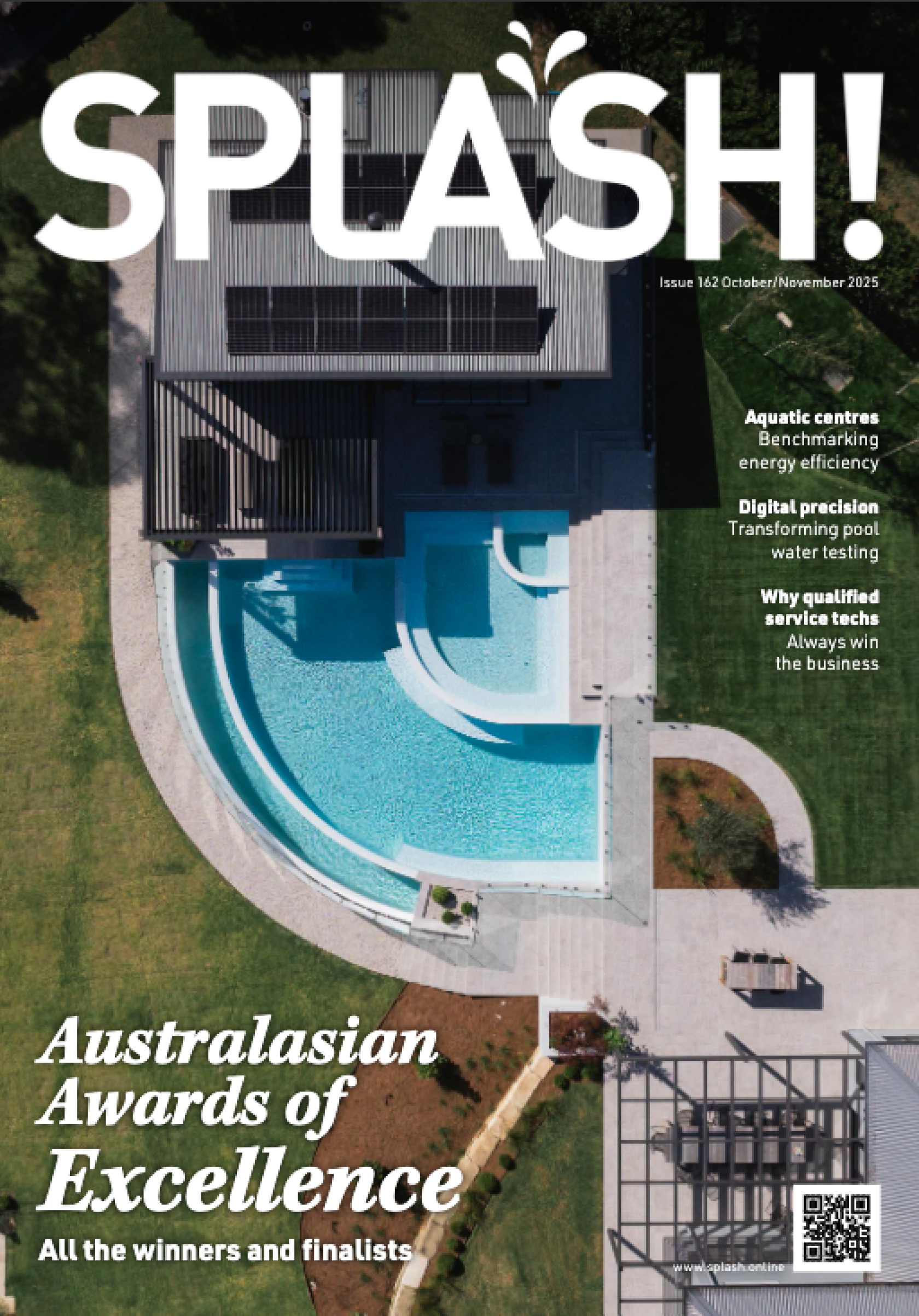WA ombudsman makes 25 recommendations to prevent child drownings

 The Western Australian Ombudsman has tabled a report to parliament investigating ways to prevent or reduce deaths of children by drowning, following a six-year investigation from July 2009 to June 2015.
The Western Australian Ombudsman has tabled a report to parliament investigating ways to prevent or reduce deaths of children by drowning, following a six-year investigation from July 2009 to June 2015.
For the Investigation, the ombudsman examined the deaths of 34 children who had died by drowning. Almost three quarters of the 34 children who died by drowning were aged under five years (24 children or 71 per cent).
Where location was known, private swimming pools were the most common location of fatal and non-fatal drowning incidents during the six-year investigation period. Sixteen (47 per cent) of the deaths and 170 (66 per cent) of the 258 children who were admitted to a hospital following a non-fatal drowning incident occurred in a swimming pool.
Accordingly, the ombudsman determined to examine private swimming pools in Western Australia in more detail, selecting five local government areas to study.
Among its many findings were that:
• Only 30 to 50 per cent of notices of completion for private swimming pools were submitted by builders
• Between eight and 52 per cent of swimming pool barriers inspected did not comply with the Building Regulations 2012 on initial inspection
• Problems with gate latches were the most common reason that swimming pool barriers did not comply
• One fifth of the reasons that swimming pool barriers did not comply related to three-sided barriers.
Lack of active supervision
Lack of active supervision proved to the telling factor in all deaths of children under five – regardless of the location. The ombudsman found that:
• None of the six children aged under five years who died by drowning, and who were known to be in, on, or around water, were under active supervision;
• None of the 18 children aged under five years who died by drowning, and who were not known to be in, on, or around water, were under active supervision; and
• Of the 10 children aged five years and over who died by drowning, eight children were known to be in, on, or around water, and for six of these children the location of the fatal drowning incident was a river, ocean, lake, dam or pond.
Inspection fees may rise
One finding in the report was that inspection fees charged by councils should rise to help counter the backlog of inspections.
The five selected local governments charged between $14 and $33 per annum. Additionally, as part of a survey, 129 councils responded with their fee structure:
• 26 per cent did not charge for swimming pool barrier inspections
• 13 per cent charged between $13 and $14.36 per year (that is, a total of up to $57.44 over a four year period);
• 54 per cent charged between $14.37 and $57.45 per year;
• One per cent charged slightly more than $57.45 per year;
• Seven per cent did not know how much they charged for inspections.
Two of the 138 survey respondents specifically stated that the capped fee does not cover the actual costs of the administration of the inspections process and the on-the-ground inspections, particularly within the smaller local governments.
The ombudsman recommended that the building commissioner:
(i) Establishes the actual cost of the efficient delivery of swimming pool barrier inspection practices;
(ii) If appropriate, seeks an amendment to the Building Regulations 2012 so that the allowed charge reflects this efficient cost; and
(iii) Informs local governments of the efficient cost so that such cost is transparent and borne by the users of the system (that is, ratepayers who have a swimming pool and not cross-subsidised by non-swimming pool owners).
Some other recommendations
Some of the other relevant recommendations include:
- Develop and implements further strategies designed to ensure that real estate agents, including property managers, and private landlords, respond appropriately to information regarding swimming pool barriers that do not comply with the regulations; and consider the introduction of requirements for them to provide a copy of the most recent inspection form to the potential tenant at the time of entering into a lease agreement.
- Review the operation of section 33 of the Building Act 2011 in order to determine the level of compliance of permit holders (including owners, registered and unregistered builders and swimming pool barrier installers), and consider measures to increase compliance including education and compliance audits targetting non-registered builders, and the use of sanctions.
- Clarify the charges that local governments are able to impose for inspections of swimming pool barriers, including whether these charges may be imposed only in the year of an inspection, or each year, establish the actual cost of inspection and if appropriate, seek an amendment to the regulations to increase fees.
- The Building Commissioner should fund training to enhance inspection standards, linking the training program to the national training system, and promote quality assurance processes for swimming pool barrier inspections to local governments.
- Develop a swimming pool barrier inspection checklist template, which incorporates all of the required elements to meet the applicable standards, and is as efficient to complete as possible for inspectors, for use across local governments, and ensure that the training program includes specific training on the template.
- Review the requirements in other jurisdictions for temporary barriers and explore whether any such requirements should be considered in Western Australia.
- Ensure owners and occupiers are aware of the requirements that apply to portable swimming pools and spas; and assist local governments to identify when portable swimming pools and spas may require inspection.
- Considers appropriate community education regarding the specific risks of children drowning in portable pools and spas, including exploring opportunities for retailers and suppliers to inform purchasers at the point of sale of the risks of children drowning in portable pools and spas and the need to comply with legislative requirements.
Download the full report here: Ombudsman-WA-Investigation-Report-Drownings-23-November-2017.
SPASA WA is meeting with the Department of Mines, Industry Regulation and Safety and the Building Commissioner to discuss the implications and has asked for feedback.




